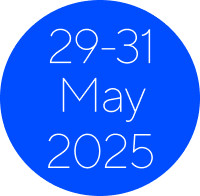Chair: Ben Darlow (New Zealand)
Speakers: Hilal Ata Tay (Türkiye), Samantha Bunzli (Australia), Brooke Conley (Australia)
- To understand impacts of the way in which people make sense of osteoarthritis on health care, health behaviour, and engagement with valued activities.
- To understand differences and similarities in views about osteoarthritis from different cultures.
- To identify ways in which physiotherapists can support people to make sense of OA in ways that empower engagement in healthy lives.
Osteoarthritis is a major contributor to health loss worldwide. The way in which people make sense of osteoarthritis impacts self-care, and engagement in health care and health behaviours. People’s osteoarthritis knowledge, attitudes, and beliefs may vary due to language, religion, race, and cultural background. [1, 2]
The majority of investigation into knowledge, attitudes, and beliefs about osteoarthritis has been undertaken in WEIRD (Western, Industrialised, Rich, and Democratic) countries and involved the dominant population groups within these countries. Osteoarthritis is commonly understood from a biomechanical viewpoint that focuses on progressive joint degradation due to age, joint wear, and excessive joint load. [3, 4] This impairment discourse focuses on what people lose and what they are unable to change. [5] Within this biomedical impairment model, symptoms of pain and joint noises are interpreted as evidence of further joint damage. [4] This model reduces people’s confidence and motivation to engage in behaviours shown to enhance health such as therapeutic and generalised exercise, [6, 7] and creates expectations of progressive health loss and ultimate need for joint replacement. [3, 4]
In Turkey, a non-Western nation (Half-WEIRD, Southeast Europe), osteoarthritis is commonly referred to as ‘calcification (kireçlenme)’, diverging from the terminology of ‘wear and tear’ commonly encountered in Western societies. Turkish individuals often attribute their condition to the calcification of knee structures, typically deriving their knowledge from healthcare professionals and environmental cues rather than written sources.
Among Aboriginal and Torres Strait Islander peoples (Indigenous peoples of Australia), impairment beliefs, such as osteoarthritis is an ‘old people’s disease’ caused by ‘wear and tear’ that could result in ‘needing a wheelchair’, align with dominant beliefs among the non-Indigenous population. Lack of access to culturally safe care and information, often leaves Aboriginal and Torres Strait Islander peoples ‘suffering in silence’ and ‘in the dark’ about what to do about osteoarthritis, with broad impacts on physical, emotional, social, cultural, and spiritual wellbeing.
Working with people to make sense of osteoarthritis in ways that support their ability to optimise their health and engage in valued activities is a key role for physiotherapists. Qualitative research highlights the value of allowing someone to share their story and being curious about the ways in which they make sense of their health and their condition. [3, 4] This provides a physiotherapist with the opportunity to consider how this relates to their views and identify opportunities to co-construct shared understanding that helps someone achieve their goals.
A range of resources are available to help explain osteoarthritis from perspectives that support participation rather than impairment. There is evidence that information resources can increase knowledge, reduce fear, increase self-efficacy, and increase motivation to exercise. [8, 9] It is vital that education is tailored to the needs and context of the individual. Understanding attitudes and beliefs towards osteoarthritis across various nations and cultures, including non-Western contexts, helps physiotherapists to tailor care to people from diverse backgrounds. This may include adapting interventions and recommendations, such as supporting use of traditional medicinal plants (bush medicine), or incorporating yarning circles for peer support and group-based information sessions.
- Ibrahim SA, Siminoff LA, Burant CJ, Kwoh CK. Variation in perceptions of treatment and self-care practices in elderly with osteoarthritis: a comparison between African American and white patients. Arthritis Care Res 2001;45(4):340-45.
- Sathiyamoorthy T, Shabana AA, Kloseck M. Cultural Factors Influencing Osteoarthritis Care in Asian Communities: A Review of the Evidence. Journal of Community Health 2018;43(4):816-26.
- Bunzli S, O’Brien P, Ayton D, Dowsey M, Gunn J, Choong P, Manski-Nankervis J-A. Misconceptions and the Acceptance of Evidence-based Nonsurgical Interventions for Knee Osteoarthritis. A Qualitative Study. Clin Orthop Relat Res 2019;477(9):1975-83.
- Darlow B, Brown M, Thompson B, Hudson B, Grainger R, McKinlay E, Abbott JH. Living with osteoarthritis is a balancing act: an exploration of patients’ beliefs about knee pain. BMC Rheumatol 2018;2(1):15.
- Behera NS, Bunzli S. Towards a Communication Framework for Empowerment in Osteoarthritis Care. Clinics in Geriatric Medicine 2022;38(2):323-43.
- Hurley M, Dickson K, Hallett R, Grant R, Hauari H, Walsh N, Stansfield C, Oliver S. Exercise interventions and patient beliefs for people with hip, knee or hip and knee osteoarthritis: a mixed methods review. Cochrane Database Syst Rev 2018;4:Cd010842.
- Kanavaki AM, Rushton A, Efstathiou N, Alrushud A, Klocke R, Abhishek A, Duda JL. Barriers and facilitators of physical activity in knee and hip osteoarthritis: a systematic review of qualitative evidence. BMJ Open 2017;7(12):e017042.
- Darlow B, Brown M, Hudson B, Frew G, Clark J, Vincent L, Abbott JH, Briggs AM, Grainger R, Marra C, McKinlay E, Stanley J. Feasibility of a randomised controlled trial of two types of written information for people with knee osteoarthritis. Osteoarthritis Cartilage Open 2022;4(2):100254.
- Egerton T, Bennell KL, McManus F, Lamb KE, Hinman RS. Comparative effect of two educational videos on self-efficacy and kinesiophobia in people with knee osteoarthritis: an online randomised controlled trial. Osteoarthritis Cartilage 2022;30(10):1398-410.
See the 24 focused symposia to be presented at congress.
Find out who the key speakers at congress will be.
Find out which clinical topics will be covered in these discussion-based seminars.




